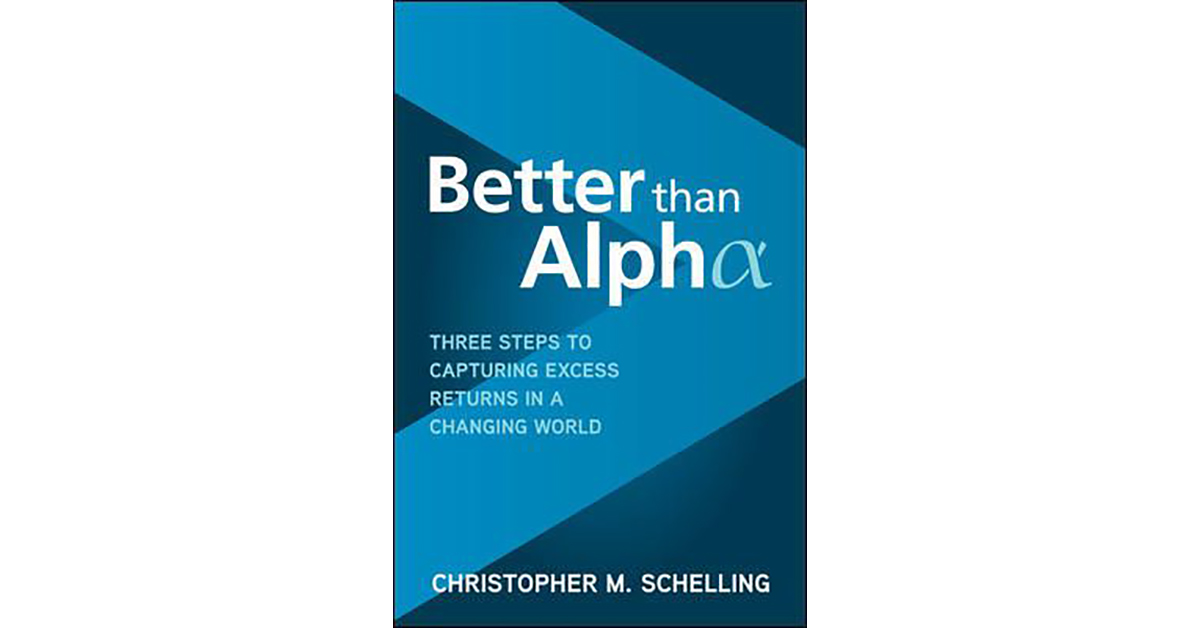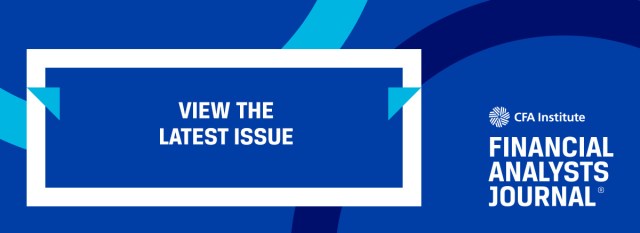[ad_1]
Better than Alpha: Three Steps to Capturing Excess Returns in a Changing World. 2021. Christopher M. Schelling. McGraw Hill.
Better than Alpha: Three Steps to Capturing Excess Returns in a Changing World, by Christopher M. Schelling, head of the Austin, Texas-based investing firm Windmuehle Funds and former director of private equity investing for the Texas Municipal Retirement System, constitutes a valuable resource for practitioners seeking a more thorough understanding of alpha, including what it is, how to identify it, and what they should be focusing on instead. The author’s three-step framework of behavior (policy setting and strategic allocations), process (manager selection and tactical allocation), and organization (types of authority, oversight / attribution, and delegation) provides a more optimal way of thinking about alpha. Rather than simply attempting to beat the market, investors should make decisions that heighten the probability of achieving their investment objectives.
Behavioral alpha (smart thinking) is the excess return that investors can earn by beating their behavioral biases, as opposed to beating the market. Humans employ two primary systems of thinking. System 1 is a quick, intuitive processor that favors efficiency and speed but often leads us astray. System 2 is a more deliberate and logical process but is also much more effortful. Since System 2 is far more energy-intensive than System 1, our natural proclivity is to bypass it. We all have limited time, resources, and mental acuity. According to the author, we can mitigate the failings of our System 1 thinking when making investment decisions without simultaneously overexerting the limited resources of System 2 decision making, simply by not using System 2 as much.
Investors should prioritize the biggest, most impactful decisions and systemize as much of the rest as they can. For example, rational investors should not allocate the same mental energy to a $1,000 business expense and a $100 million private equity investment. One strategy provided by the author that allows greater parsimony with System 2 is simply to make fewer big decisions. The less frequently a decision gets made, the more appropriate it is to implement System 2 thinking. The more frequently a decision gets made, the more likely System 1 is to hijack the thought process at some point, regardless of one’s intentions. Highly impactful and infrequent decisions, such as setting policy and selecting the asset allocation, deserve System 2 decision-making efforts.
Process alpha (development of smart habits) is obtained from high-quality knowledge that facilitates selection of managers with comparatively high probability of meeting investment objectives. Smart habits include systematizing as much of the investment process as possible and automating what works in order to become more efficient and accurate. Examples include using intelligent checklists to help screen managers more efficiently and informed rebalancing methods that take the emotion out of maintaining the portfolio in line with long-term objectives. These smart habits limit opportunities for cognitive blind spots to affect the portfolio adversely and help drive successful outcomes. Behavioral alpha and process alpha are about being the architect of one’s investment behavior rather than its unwitting victim.
Finally, organizational alpha (smart governance) is the improvement in investment performance that proceeds from better organizational decision making. Governance means properly ensuring that an institution has the right people in the right positions to make the right decisions. In order for an investment organization to be successful, the most qualified person should decide and the best ideas need to win. According to the author, if the organization cannot get experts into hierarchical positions, it should push the actual authority to the relevant experts, internally or externally, and make sure they are doing their job. In this way, an institution will have a better chance, compared to more hierarchical, bureaucratic structures, of meeting its total policy and investment objectives. Inefficiency has a real cost; eliminating it is how organizational alpha can be easily achieved.
In summary, this book provides the insights and tools investors need to save time, resources, and, above all, mental and emotional energy to improve their investing outcomes. Rather than acting as ghost hunters chasing alpha, investors should focus on making decisions that create a higher probability of meeting their investment objectives.
If you liked this post, don’t forget to subscribe to the Enterprising Investor.
All posts are the opinion of the author. As such, they should not be construed as investment advice, nor do the opinions expressed necessarily reflect the views of CFA Institute or the author’s employer.
Professional Learning for CFA Institute Members
CFA Institute members are empowered to self-determine and self-report professional learning (PL) credits earned, including content on Enterprising Investor. Members can record credits easily using their online PL tracker.
[ad_2]
Image and article originally from blogs.cfainstitute.org. Read the original article here.


